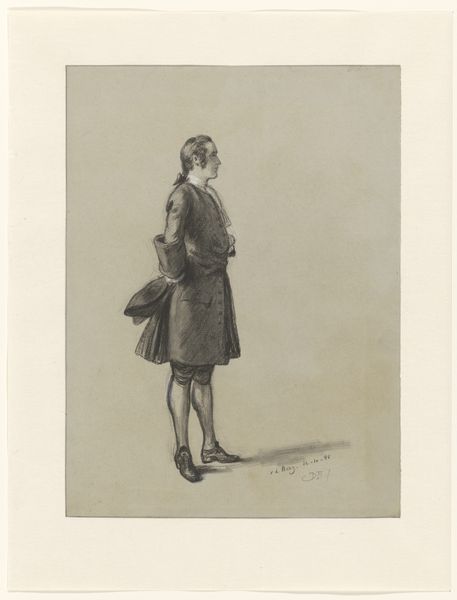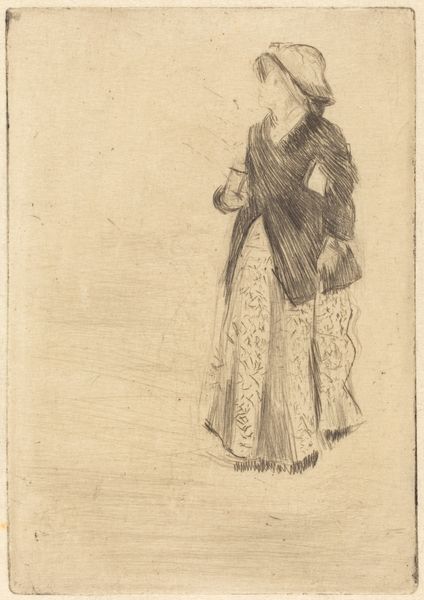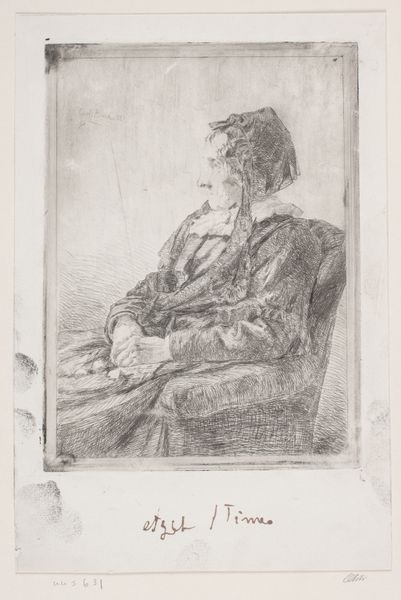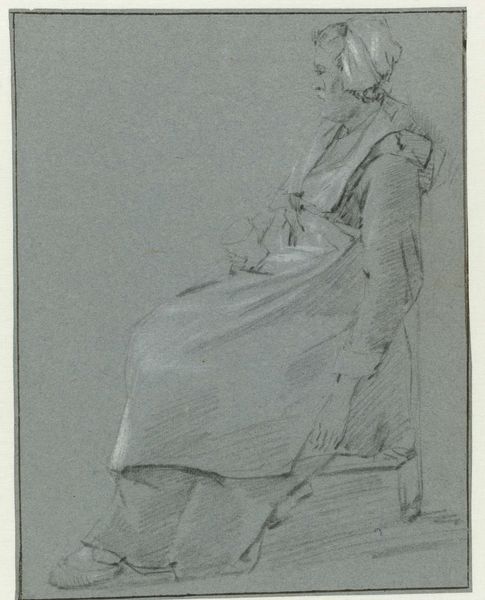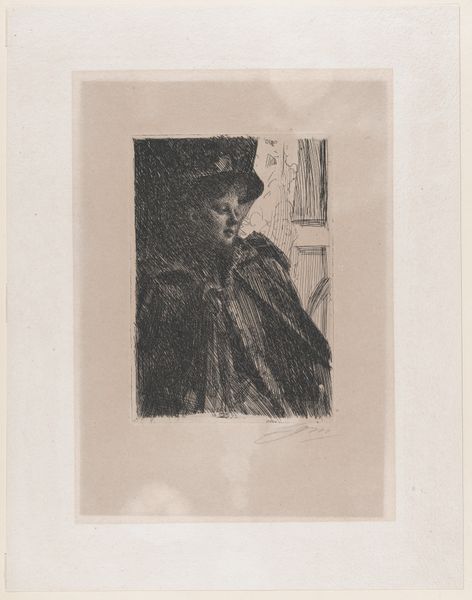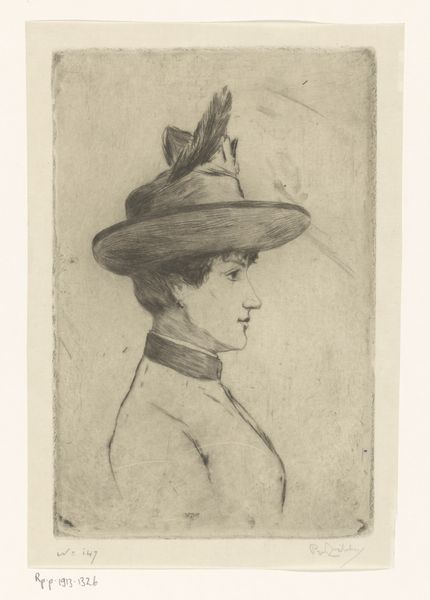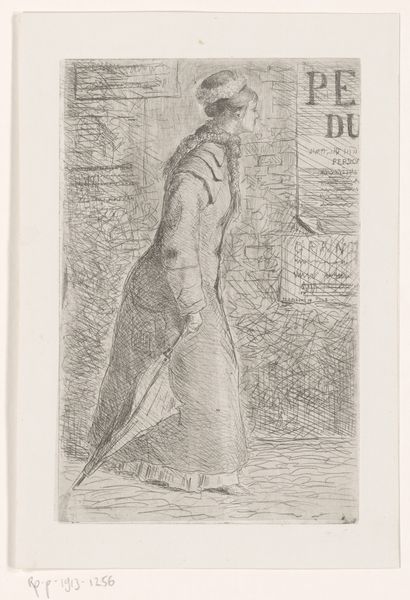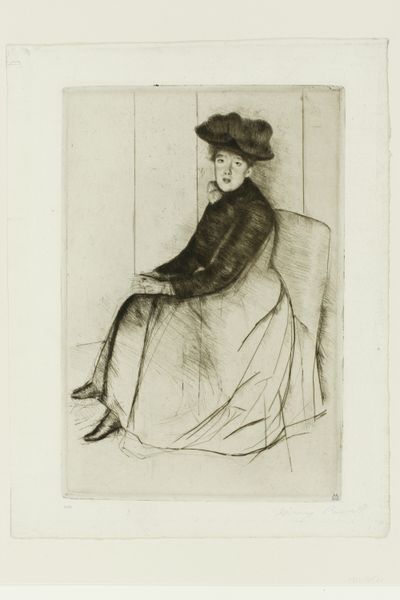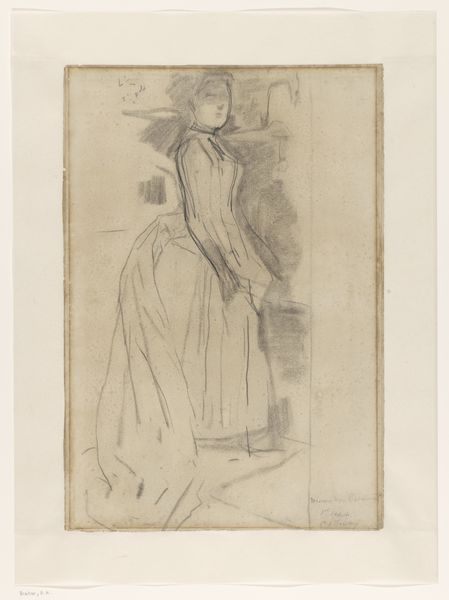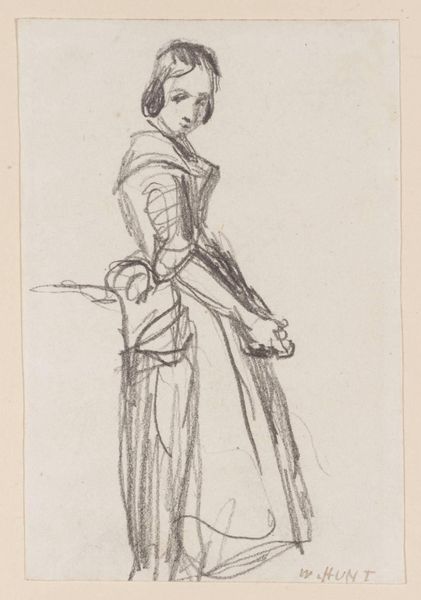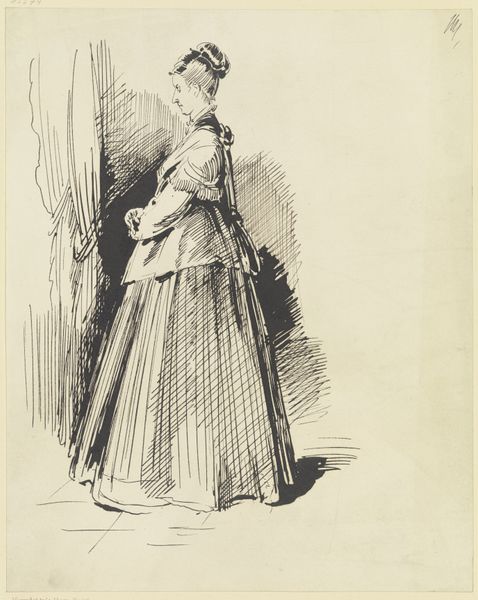
drawing, print, etching, paper
#
portrait
#
drawing
# print
#
etching
#
figuration
#
paper
#
line
#
realism
Dimensions: height 184 mm, width 119 mm
Copyright: Rijks Museum: Open Domain
Editor: So, this etching is "Wandelende vrouw met paraplu," or "Woman Walking with Umbrella" created before 1879 by Philip Zilcken. It's at the Rijksmuseum, and the first thing that strikes me is how… ordinary it feels? Like a fleeting glimpse of everyday life. What do you see in it? Curator: The very ‘ordinariness’ you identify speaks volumes. Zilcken captures a moment of public life increasingly accessible in the late 19th century. Consider the rise of the flâneur, often male, observing city life. Zilcken gives us a female figure, active in that same space. Does she partake in the flâneur's detached observation, or does she move with more purpose, necessitated by her role in society? Editor: That's interesting! I hadn't thought about the social role of women in public spaces back then. It makes me wonder where she is going, and what kind of access she has. Curator: Exactly. The umbrella itself can be interpreted as a shield, both from the weather and the male gaze. Etchings, as readily reproducible prints, also played a significant role. They made art accessible beyond the elite circles, reflecting and shaping broader public taste. Editor: So it’s almost a double layer of accessibility: the subject matter itself depicting an accessible public life, and the medium, etching, allowing wider distribution of the artwork. I wonder, was this artist and artwork a success? Curator: Zilcken was well respected, but not considered a leading figure. It's vital to understand that the institutional support - the museums, the salons, the critics - privileged certain narratives, often marginalizing women artists or those who focused on quotidian subjects. Art history, much like society, had its own power dynamics. Editor: That makes so much sense. It’s important to think about how art history itself shapes what we see and value. Thank you for your insights! Curator: A valuable lesson for us both! Always question whose story is being told, and whose is being left out.
Comments
No comments
Be the first to comment and join the conversation on the ultimate creative platform.
